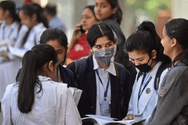
Never Miss an Exam Update
The Bhakti and Sufi traditions were the forces of transformation in the religious and cultural dynamics of India . They arose during the medieval age to dismantle strict societal frameworks by stressing devotion, love, and identification with the divine. The Bhakti movement, which flourished between the 8th and 18th centuries, was spearheaded by poet-saints such as Kabir, Mirabai, Tulsidas, and Guru Nanak. They spurned ritualistic cults and sustained individual devotion (bhakti) as the only means of salvation. Analogously, Sufi Islam, an Islamic mystical order, stressed spiritual intimacy with God based on love, simplicity, and service. Sufi saints, or pirs, such as Nizamuddin Auliya and Baba Farid, emphasized communal harmony and were instrumental in propagating Islam in the Indian subcontinent. This chapter in the CBSE Class 12 History syllabus explores how these movements influenced religious beliefs and devotional literature. It examines how Bhakti and Sufi saints composed poetry, hymns, and philosophical discourses in regional languages, making spirituality accessible to the common people. The interactions between these traditions fostered cultural synthesis, leading to the growth of syncretic traditions such as the Sant tradition, which combined elements of both Bhakti and Sufi teachings.
To help students grasp the core concepts of this chapter, this page provides a collection of important questions with answers. These questions involve major topics such as teachings of Bhakti and Sufi saints, influence of the movements on society, and historical development of devotional literature . Solving these questions will enable learners to compare historical views and enhance their awareness of religious and cultural changes during medieval India. Through these well- framed questions, students will be able to gain a better understanding of the inclusive and reformist character of the Bhakti and Sufi traditions. While studying for board exams or increasing historical awareness , these significant questions will be a useful aid in learning the chapter. Prepare thoroughly with the most important questions of CBSE Class 12th History Chapter 6 - Bhakti-Sufi Traditions Changes in Religious Beliefs and Devotional Texts. You can first cover the CBSE Class 12th History syllabus to understand the key topics and then start solving the CBSE Class 12th History Chapter 6 - Bhakti-Sufi Traditions Changes in Religious Beliefs and Devotional Texts Important Question to get a better understanding of your preparation level. Start practicing now.
Was this article helpful?

































